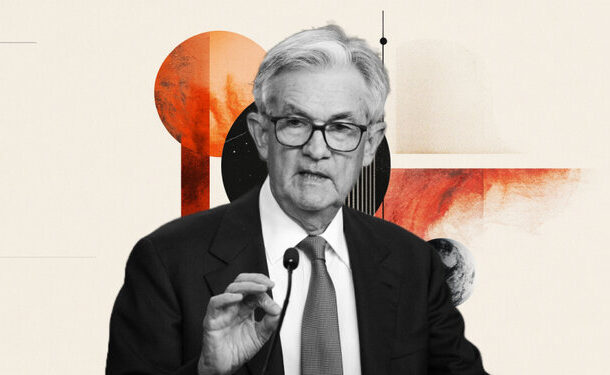
- The Swiss Franc extends gains against the US Dollar as geopolitical tensions ease after a fragile ceasefire between Iran and Israel.
- The USD/CHF trades just above its lowest levels since 2011, pressured by safe-haven flows and a broadly weaker US dollar.
- Fed Chair Powell says “many paths are possible” for US rates, keeping a July cut on the table if data allow.
The Swiss Franc (CHF) trades stronger against the US Dollar (USD) on Tuesday, building on Monday’s gains amid a broadly weaker Greenback as geopolitical tensions ease following a ceasefire agreement between Iran and Israel. While the ceasefire has been declared and generally accepted, the situation remains fragile and highly tense, with both Iran and Israel accusing each other of violating the truce. This lingering uncertainty is keeping investors cautious and sustaining demand for traditional safe-haven currencies such as the Swiss Franc, even as immediate fears of a broader escalation have subsided.
Reflecting this cautious mood, the USD/CHF pair is hovering just above its lowest levels since 2011, trading near 0.8052 at the time of writing during the American trading hours, though it has yet to breach that long-term low. A softer US Dollar and persistent safe-haven demand for the Franc continue to weigh on the pair, despite the Swiss National Bank’s (SNB) latest efforts to curb currency strength by reverting to a zero-rate policy.
Last week, the SNB made headlines with its sixth consecutive rate cut, bringing its key policy rate back to zero as policymakers pivot from fighting inflation to addressing emerging deflation risks. Recent data showed consumer prices slipping into negative territory on an annual basis, partly due to the strong Franc keeping imported goods cheaper. Underscoring its flexible stance, the SNB pledged to “adjust our monetary policy if necessary” after ending a period of less than three years with positive borrowing costs. However, a Bloomberg survey reveals a split among forecasters: only seven out of sixteen expect the SNB to push rates into negative territory at upcoming meetings in September or December, while the rest anticipate no further changes. This suggests the SNB is in no rush to cut rates further for now, a position that continues to underpin the franc’s resilience.
Adding to the Dollar’s weakness, Federal Reserve (Fed) Chair Jerome Powell’s testimony on Tuesday reinforced a cautious yet open tone on US monetary policy. He stressed that the Fed needs “more confidence that inflation is moving sustainably toward 2%” before cutting rates but noted that “many paths are possible,” including a potential cut as early as July if inflation softens more quickly than expected. Powell said, “We could see inflation come in not as strong as we expect. If that were the case, that would tend to suggest cutting sooner. We could see the labor market weaken, and that would also suggest cutting sooner. On the other hand, if we see inflation coming in higher or if the labor market were to remain strong, then we would probably be moving later.”
Supporting this view, Vice Chair Michelle Bowman and Governor Christopher Waller had already signaled a more dovish tilt, with Bowman pointing to “encouraging signs” on inflation progress and Waller warning it would be “unwise to wait too long” if economic conditions show signs of softening. Their earlier remarks helped shape market expectations for near-term policy easing. This combination of cautious optimism and policy flexibility keeps the Greenback on the defensive, boosting the Swiss Franc’s appeal.
Swiss economy FAQs
Switzerland is the ninth-largest economy measured by nominal Gross Domestic Product (GDP) in the European continent. Measured by GDP per capita – a broad measure of average living standards –, the country ranks among the highest in the world, meaning that it is one the richest countries globally. Switzerland tends to be in the top spots in global rankings about living standards, development indexes, competitiveness or innovation.
Switzerland is an open, free-market economy mainly based on the services sector. The Swiss economy has a strong export sector, and the neighboring European Union (EU) is its main trading partner. Switzerland is a leading exporter of watches and clocks, and hosts leading firms in the food, chemicals and pharmaceutical industries. The country is considered to be an international tax haven, with significantly low corporate and income tax rates compared with its European neighbors.
As a high-income country, the growth rate of the Swiss economy has diminished over the last decades. Still, its political and economic stability, its high education levels, top-tier firms in several industries and its tax-haven status have made it a preferred destination for foreign investment. This has generally benefited the Swiss Franc (CHF), which has historically kept relatively strong against its main currency peers. Generally, a good performance of the Swiss economy – based on high growth, low unemployment and stable prices – tends to appreciate CHF. Conversely, if economic data points to weakening momentum, CHF is likely to depreciate.
Switzerland isn’t a commodity exporter, so in general commodity prices aren’t a key driver of the Swiss Franc (CHF). However, there is a slight correlation with both Gold and Oil prices. With Gold, CHF’s status as a safe-haven and the fact that the currency used to be backed by the precious metal means that both assets tend to move in the same direction. With Oil, a paper released by the Swiss National Bank (SNB) suggests that the rise in Oil prices could negatively influence CHF valuation, as Switzerland is a net importer of fuel.
Information on these pages contains forward-looking statements that involve risks and uncertainties. Markets and instruments profiled on this page are for informational purposes only and should not in any way come across as a recommendation to buy or sell in these assets. You should do your own thorough research before making any investment decisions. FXStreet does not in any way guarantee that this information is free from mistakes, errors, or material misstatements. It also does not guarantee that this information is of a timely nature. Investing in Open Markets involves a great deal of risk, including the loss of all or a portion of your investment, as well as emotional distress. All risks, losses and costs associated with investing, including total loss of principal, are your responsibility. The views and opinions expressed in this article are those of the authors and do not necessarily reflect the official policy or position of FXStreet nor its advertisers. The author will not be held responsible for information that is found at the end of links posted on this page.
If not otherwise explicitly mentioned in the body of the article, at the time of writing, the author has no position in any stock mentioned in this article and no business relationship with any company mentioned. The author has not received compensation for writing this article, other than from FXStreet.
FXStreet and the author do not provide personalized recommendations. The author makes no representations as to the accuracy, completeness, or suitability of this information. FXStreet and the author will not be liable for any errors, omissions or any losses, injuries or damages arising from this information and its display or use. Errors and omissions excepted.
The author and FXStreet are not registered investment advisors and nothing in this article is intended to be investment advice.







